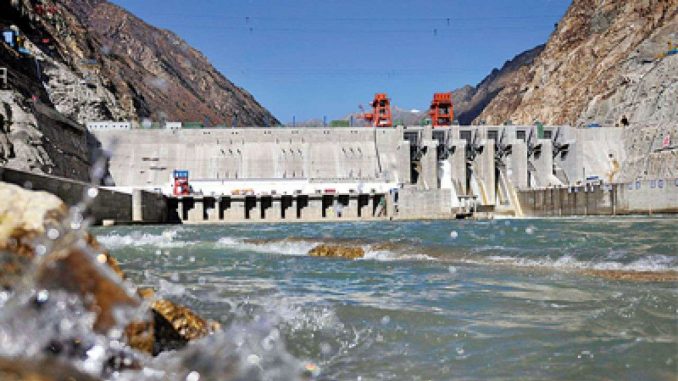
- Scientists were concerned about the Brahmaputra River’s potential for catastrophic flooding in the future due to climate warming.
- Brahmaputra river floods cover vast areas in Northeast India, Assam, and continue its destruction into Bangladesh and flow into the Bay of Bengal.
- The present projections of the river flooding are based on observations of past rainfall patterns.
- But these observations rely on discharge-gauge records that date back to the 1950s.
- The scientists conducted a new study based on tree rings.
- Tree rings provided a picture of rainfall patterns of seven centuries.
- The tree rings showed that the post-1950s period was one of the driest since 1300 and also the wetter periods in the past.
- Scientists used climate models for the simulation of future discharge.
- Researchers found that destructive floods may occur more frequently than imagined.
- The tree ring shows that the recent decades from the 1950s to 1980s were usually dry.
- The study also suggests that the future will likely be wetter due to the emission of carbon dioxide.
- This suggests that there is an underestimation of the current frequency of wet years and in turn of flooding.
- The study found that one would underestimate the danger by 24% to 38%.
- The tree ring study shows that one can expect flooding to come about every three years.
Tree Rings
- When soil moisture is high the tree rings grow wider in years.
- These wider rings reflect more rainfall and higher river turnoff.
- In wet monsoon years, the trees in the region grow wider and put on wide rings.
- In dry monsoon years, they grow less and put on narrow rings.
- These trees can live for a long time and help to study the climate conditions for the past several centuries.
- This can be done by taking a small, pencil-thin tree crore from the trees and measuring their rings under a microscope.
- The ancient trees were sampled at 28 sites in Tibet, Myanmar, Nepal, and Bhutan.
- The samples are collected from the sites close enough to be affected by the same weather systems at the Brahmaputra watershed.
- With help of the rings, scientists built a 696-year chronology, 1309 to 2004.
- The tree rings gave information about the past river flow by informing how wet the upper part of the basin was.
- The scientists found that the widest rings coincided with major flood years.
- From this data, researchers extrapolated the yearly river discharge in the centuries preceding modern records.
Findings of the Research
- Records showed a median discharge of a river flow gauge in Northern Bangladesh about 41,000 cubic metres per second from 1956 to 1986 and 43,000 cubic metres from 1987 to 2004.
- But the tree rings, in contrast, showed that 1956-1986 was in only the 13th percentile for river discharge and 1987-2004 in the 22nd.
- The rings showed the dry times in the 1400s, 1600s, and 1800s and also showed extreme flooding with no comparable period during 1956-2004.
- The worst period was from 1560-1600, 1750-1800, and 1830-1860.
- The existing discharge record would underestimate future flood hazards by 24-38% without factoring in climate warming.
- In this region, water ends up as monsoon rainfall as high temperatures drive more evaporation of ocean waters.
- Low-lying areas of Bangladesh hit the hardest when the river is flooded.
- ● Researchers noted that the serious floods came in Bangladesh in 1998 and 70% went underwater and again in 2007 and 2014.
- The new findings are relevant to Assam and Northeast India and this risk can be reduced by planned projects in the region.

Leave a Reply
You must be logged in to post a comment.